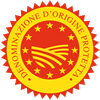Description
Redykolka PDO is a small cheese in the shape of a miniature animal, bird, heart or spindle. It is a semi-hard, half-fat cheese done with unpasteurized milk coming from the Polish mountain sheep breed. The percentage of milk coming from the Polska Krowa Czerwona breed may not be more than 40 % of the total content of the milk used.
Production Area
Redykolka PDO is produced in some municipalities of the Cieszynski District and of the Zywiecki District in the Slesian region; in all Nowotarski District, in all the Tatrzanski District, in some municipalities of the Limanowski District and of the Nowosadecki District, in the Lesser Poland region.
Production Method
The distinctive vegetation in the area where the cheese is produced is very important for the quality and the characteristic taste of the milk used in the production of Redykolka PDO. This cheese is a seasonal product, made during the sheep-grazing period. During this period, the animals feed exclusively on the fresh vegetation of the Podhale meadows, pastures and mountain pastures. Many of these species of plants are used in folk medicine. The production phases start with the cold ripening of the milk. The milk is kept at room temperature to increase its acidity. After this stage, the soured milk is mixed with fresh milk at a warm temperature in a copper kettle. Then, rennet is added to the milk, which is then left until curds form. The curds are then grinded with the aid of traditional tools. The whey is afterwards drained until 50 % of the total amount. After the pressing of the grains and the removal of the cheese, the mass is pounded by hand and a ball is formed, which is placed in a vessel containing whey. The cheese mass is formed with the aid of special moulds into the shape of a heart, bird, lamb, spindle etc. The last production phases are the soaking in brine, for up to 24 hours, the drying for a period of 12-24 hours and the smoking (maturing ) with cold smokes for 3-7 days.
Appearance and Flavour
The cheese has the shape of a miniature animal, bird, heard or spindle. The glistening straw colour of the rind (pale brown with a slight sheen) is imparted during the smoking process. Small amounts of another colour may be present on the rind, or the colour of the rind may be slightly faded. The rind is smooth and elastic, but may be slightly rough. It may display a slight unevenness and have cracks that do not penetrate the cheese itself. The cheese is elastic and slightly hard. It has a slightly salty taste and a pronounced smoked aroma.
History
There are many antique documents mentioning Redykolka PDO. The first precise description of how the cheese was made in log huts dates from 1748. Redykolka PDO is an ancient product of Wallachian shepherds who grazed their sheep in highland glades. The cheese came to Podhale along with the Wallachian culture, the way of organising grazing, the traditional shepherd's hut and the method of processing the milk. The first mention of cheesemaking in Podhale and neighbouring areas is to be found in the founding charter of Ochotnica village in the Gorce Mountains. Dawid Woloch (David Valachi) was granted the right to found the village in 1416. Redykolka owes its name to the fact that it was distributed for free when sheep were being brought back from the mountain pastures - an event known as redykanie sie. Redykolka is also unusual in that it had ceremonial uses: shaped as doves and cockerels, it was used to decorate wedding branches and the tops of harvest wreaths.
Gastronomy
#N/A
Marketing
The product is sold as Redykolka PDO. The smallest Redykolka PDO weighs 30-60 g and comes in the shape of a spindle. When produced in other shapes, the cheese must weigh no more than 300 g.
Distinctive Features
The final quality and taste of Redykolka PDO owes much to the specific skills of the shepherds and the passing down from one generation to the next of the knowledge that is necessary to maintain the product's traditional character and unique taste. The special historical use of Redykolka PDO as a gift offered, for instance, as a way of gaining someone's esteem or as a token of gratitude for a service rendered is also one of its distinguishing features. According to tradition, the cheese figures are always made, sold and offered as gifts in pairs.





